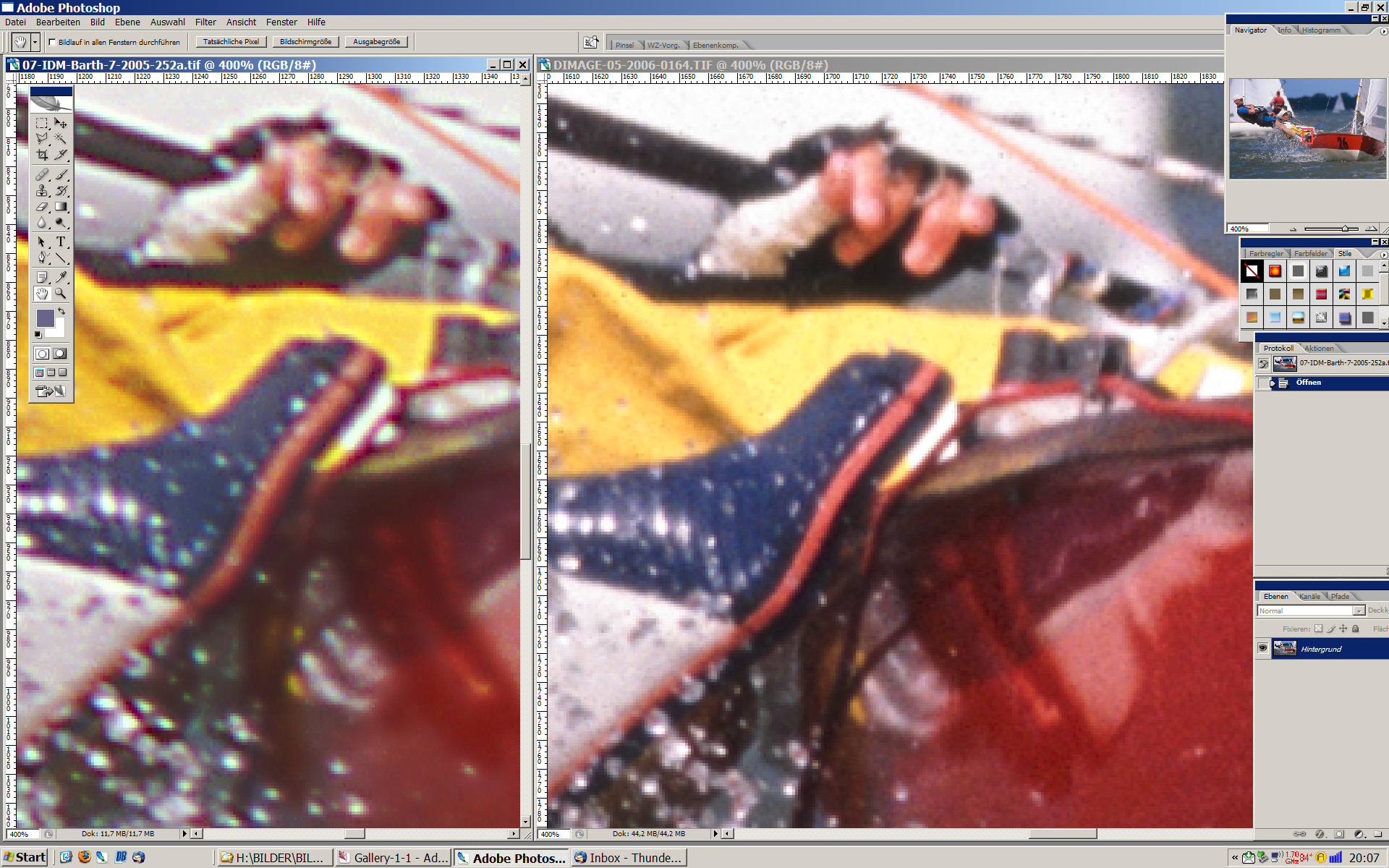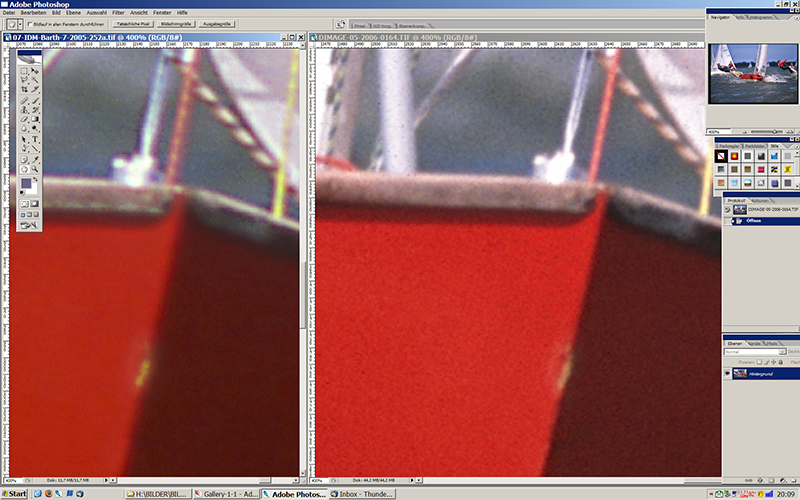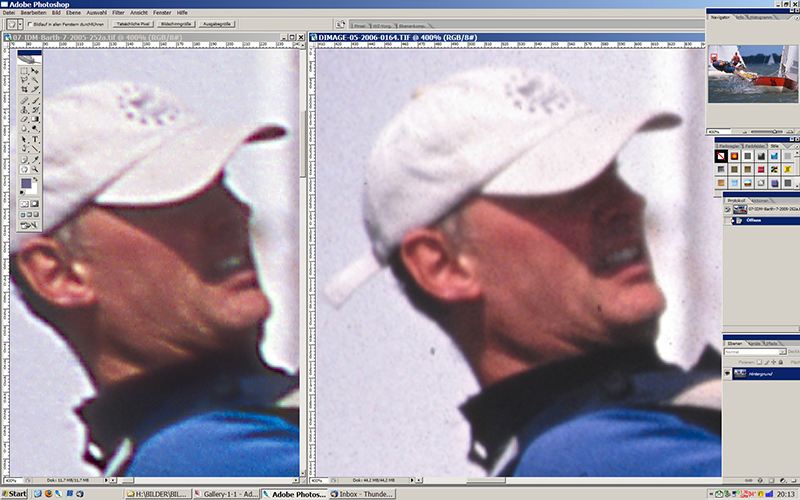|
S ö r e n H e s e - P h o t o g r a p h y
|
|
- Slide Scanning ... or why flatbeds just dont do it - Review Versioning:
Some are still using film based 35 mm cameras, although the advantages of digital have been discussed to death in various forums. Film based photography has some unique characteristics that makes it an important technique - even in the future when the mega pixel hype has out resolved lens technology (well that's already the case with some body/lens combinations in 2006). One of the main troubles when shooting film is the returning scanner dilemma. Lots of rumours in the net indicate that the Canon something or Epson something scanner will not do the 4800 ppi that is advertised everywhere. And when you carefully inspect your files in CS2 you will notice that there is softness and colour fringing everywhere in your 400% view. This is just frustrating and after a while you consider a dedicated slide scanner. What should be considered when you decided to put your cash on the desk? If you digged through the huge amount of information available in forums, online reviews, and information from various sources, what are the choices? At the time of writing only some very few scanners will do the job right if you believe the majority of the folks in the net. Number one for most of the semi-professionals is the Nikon Coolscan V, no. 2 could be Minoltas DIMAGE 5400 and No. 3 probably is the more expensive Coolscan 5000 or something like the Coolscan 9000. From a cost/use ratio point of view most people will grab the Minolta DIMAGE 5400 or the Coolscan V. The rest is either to expensive or just not good enough (production of some of the scanners will be stopped very probably soon). The new Epson V700 might be an interesting flatbed solution also usefull for high quality slide scanning but I havnt tested this model. OK, now you decided to go for one of these nice scanning devices and hoppla you just discovered that they take not more than 6 slides at once before you have to change the scanning slider and to start it all over again. This cannot be true might be one of your initial thoughts, but in fact that's exactly what you are left with. Imagine scanning 1000 slides. This is just no solution that has any practical value. What are the options? One option is called "roll-scanning". The Nikon Coolscan 5000 can scan one film as a roll without any stopping and resting, which sounds very enlightening. The only bad feeling is the one that you get when you go for the Dollar-Word. You will easily pay 1500 Euros for this scanner. Switching to digital SLRs and invest in a 10+ Mpixel SLR instead of scanning for the rest of your life? For some people out there the question is definitely: YES!!!. The cash that you could invest in an DSLR with 12MP is only twice as high and you are also saying goodbye to film and developing costs for the rest of your life AND if you are a power user with 50000+ pictures per anno, than you will save a lot of money every week! If however you like the feel of film and prefer being in the backcountry for weeks with no possibility to refill your 4 kg-s of accu equipment than you have to think about a scanning device again. Especially for nature photography at remote places or under very cold conditions film is still a nice option (btw: digital sensors in the 12-16 MP class have indeed out resolved 35 mm film i.m.o.). Anyways I was just curious how slide scanning could improve and I tested the DIMAGE 5400 from Minolta vers. the Epson Perfection 4180. The results are not surprising but clearly show that you will definitely benefit from better resolution and increased radiometric resolving power of a dedicated slide scanner.
400 % view (reduced for the web): left side: Epson Perfection 4180, right side: DIMAGE 5400. More resolution with the DIMAGE scan is clearly visible, the USM that is needed with the EP4180 scan shows up clearly and loss of details and resolution is also evident. You can do better if USM is applied after scanning but it doesnt change much the resolution difference. The 4800 dpi of the Epson is more in the 2400 dpi area i.m.o. .
|


